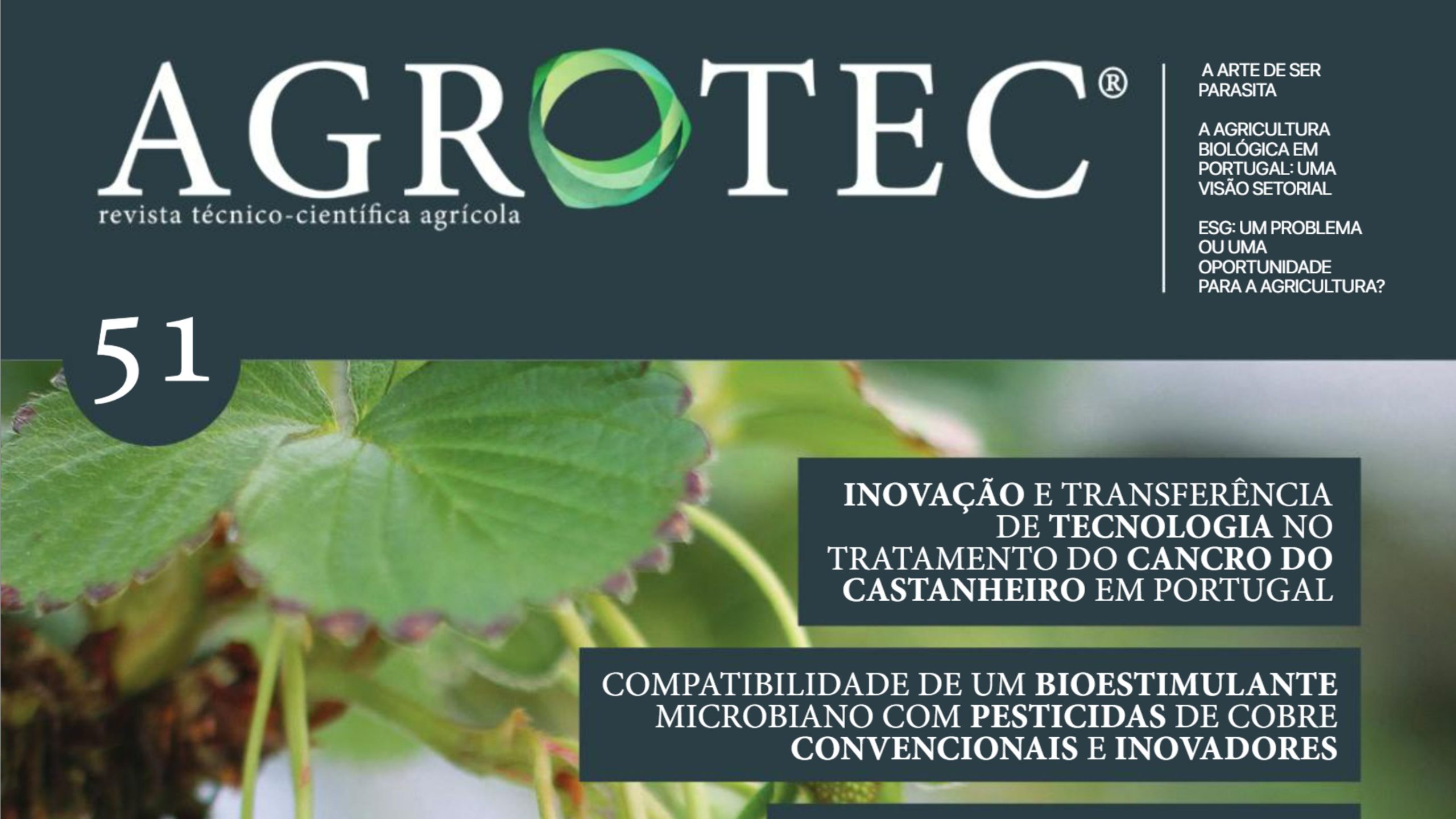Sara Peixoto, a researcher at the Centre for Environmental and Marine Studies (CESAM) and the Department of Biology (DBIO) at the University of Aveiro (UA), developed a pioneering study on the compatibility between natural biostimulants and pesticides, with the goal of promoting more sustainable agriculture. This work was carried out under the MicroStimulus project, funded by the 19th edition of the L’Oréal Portugal Medals of Honor for Women in Science, with the support of UNESCO and the Foundation for Science and Technology (FCT).
The study, featured on the cover and published in issue no. 51 of AGROTEC magazine, was authored by Sara Peixoto, Rui G. Morgado, Marija Prodana, and Professor Susana Loureiro, all researchers at CESAM and the Department of Biology at the University of Aveiro. The research focused on evaluating the compatibility between a commercial microbial biostimulant — composed of two strains of soil-beneficial bacteria — and various copper-based pesticides, widely used in crop protection.
To determine whether these beneficial bacteria, which support plant growth and improve soil quality, can survive in agricultural settings where pesticides are applied, the team conducted two types of tests: laboratory assays and pot trials with soil, simulating real-field conditions. Results showed that some pesticide formulations — especially newer ones using nanoparticulate copper oxide (nCuO) — are less harmful to microorganisms and therefore more compatible with sustainable agriculture practices.
This research reflects the mission of CESAM’s RC2 Research Cluster, which aims to understand soil processes and interactions within agricultural, forestry, and broader environmental systems, while promoting innovative solutions, sustainable management practices, ecosystem resilience, and risk reduction.
Moreover, the study aligns with the ‘One Health’ approach, which recognizes the interconnection between human, animal, and environmental health — demonstrating how responsible agricultural practices can yield positive impacts across multiple dimensions of life on Earth.
